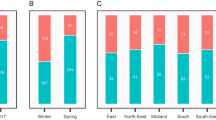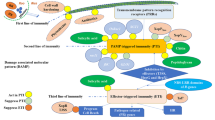Abstract
Stem rot caused by Sclerotium rolfsii is a destructive disease that induces serious yield losses in groundnut (Arachis hypogaea L.) around the world. This study used a multifaceted approach to screen 121 groundnut genotypes from different subspecies and botanical varieties for resistance to S. rolfsii under field conditions. Five wild species of Arachis were also assessed in a greenhouse study. In both experiments, 60 to 65 days after planting, plants were inoculated with an aggressive isolate of S. rolfsii using a combined agar disk technique. Disease assessments were made using a disease score (DS) scale of 1 to 5 based on the percentage of symptomatic plants. The genotypes and wild species were also screened using a SSR marker associated with fungal resistance. In the first year of study, significant variations were observed among the genotypes with respect to disease related traits. The DS results varied from 2 to 5 with a general mean of 4.7. Under heavy disease pressure, 5.7% and 1.6% of the collection were found to be moderately susceptible and moderately resistant, respectively. In the second year of study, the selected moderately susceptible and moderately resistant genotypes were assessed in similar field conditions. The overall result showed that the lowest DS was observed in the genotypes ACG 14 and ACG 101, from subsp. fastigiata var. vulgaris and var. subsp. hypogaea var. hypogaea, respectively. They also had similar pod yield with controls. For the wild Arachis species, the average DS was 3.7, A. batizocoi having the lowest DS of 2.5, followed by A. duranensis and A. cardenasii. There was no correlation between the molecular marker analysis and field phenotyping. New validated resistance related markers should be developed for further studies to select truly resistant/susceptible genotypes.

Similar content being viewed by others
References
Adhilakshmi M, Latha P, Paranidharan V, Balachandar D, Ganesamurthy K, Velazhahan R (2014) Biological control of stem rot of groundnut (Arachis hypogaea L.) caused by Sclerotium rolfsii Sacc. with actinomycetes. Arch Phytopathol Plant Prot 47:298–311
Akgul D, Ozgonen H, Erkilic A (2011) The effects of seed treatments with fungicides on stem rot caused by Sclerotium rolfsii sacc., in peanut. Pak J Bot 43:2991–2996
Backman PA, Brenneman TB (1995) Stem rot. In: Kokalis-Burelle N, Porter DM, Rodriguez-Kabana R, Smith DH, Subrahmanyam P (eds) In compendium of peanut diseases. APS Press, Minnesota, pp 36–37
Bera SK, Kamdar JH, Kasundra SV, Ajay BC (2016a) A novel QTL governing resistance to stem rot disease caused by Sclerotium rolfsii in peanut. Australas Plant Pathol 45:637–644
Bera SK, Kamdar JH, Kasundra SV, Thirumalaisamy PP (2016b) Identification of groundnut genotypes and wild species resistant to stem rot using an efficient field screening technique. Electron J Plant Breed 7:61–70
Bera SK, Radhakrishnan T, Kasundra SV, Kamdar JH (2016c) Phensotyping technique for stem rot disease in groundnut under field conditions. ICAR-Directorate of groundnut research, PB no. 5, Ivnagar road, Junagadh - 362001, Gujarat, India, technical bulletin no. 1/2016, 24 pages
Besler BA, Grichar WJ, Smith OD (1997) Reaction of selected peanut varieties and breeding lines to southern stem rot. Peanut Sci 24:6–9
Bishi SK, Kumar L, Mahatma MK, Khatediya N, Chauhan SM, Misra JB (2015) Quality traits of Indian peanut cultivars and their utility as nutritional and functional food. Food Chem 167:107–114
Bowen KL (2003) Development of stem rot (caused by Sclerotium rolfsii) in peanut in Alabama. Peanut Sci 30:120–128
Bowen KL, Hagan AK, Weeks JR (1992) Seven years of Sclerotium rolfsii in peanut fields: yield losses and means of minimization. Plant Dis 76:982–985
Branch WD, Csinos AS (1987) Evaluation of peanut cultivars resistance to field infection by Sclerotium rolfsii. Plant Dis 71:268–270
Branch WD, Culbreath AK (2013) Yield performance and pest resistance among peanut genotypes when grown without fungicides or insecticides. Crop Prot 52:22–25
Brewster V (2001) Southern blight, southern stem blight, white mold. APS net. Online publication
Dodia SM, Rathnakumar AL, Mishra GP, Radhakrishnan T, Joshi B et al (2016) Phenotyping and molecular marker analysis for stem-rot disease resistance using F2 mapping population in groundnut. Int J Trop Agric 34:1135–1139
Doley K, Jite PK (2013) Management of stem-rot of groundnut (Arachis hypogaea L.) cultivar in field. Not Sci Biol 5:316–324
Doyle JJ, Doyle JL (1990) A rapid total DNA preparation procedure for fresh plant tissue. Focus 12:13–15
Eslami AA, Khodaparast SA, Mousanejad S, Dehkaei FP (2015) Evaluation of the virulence of Sclerotium rolfsii isolates on Arachis hypogaea and screening for resistant genotypes in greenhouse conditions. Hell Plant Prot J 8:1–11
FAO (Food and Agriculture Organization) (2016) FAOSTAT. [2018-05-03]. http://faostat.fao.org/site/567/default.aspx
Francisco ML, Resurreccion AV (2008) Functional components in peanuts. Crit Rev Food Sci Nutr 48:715–746
Gorbet DW, Kucharek TA, Shokes FM, Brenneman TB (2004) Field evaluations of peanut germplasm for resistance to stem rot caused by Sclerotium rolfsii. Peanut Sci 31:91–95
Hu J, Telenko DEP, Phipps PM, Grabau EA (2016) Comparative susceptibility of peanut genetically engineered for sclerotinia blight resistance to non-target peanut pathogens. Eur J Plant Pathol 145:177–187
Jadon KS, Thirumalaisamy PP, Kumar V, Koradia VG, Padavi RD (2015) Management of soil borne diseases of groundnut through seed dressing fungicides. Crop Prot 78:198–203
Junsopa C, Jogloy S, Saksirirat W, Songsri P, Kesmala T, Shew BB (2017) Genotypic diversity of Jerusalem artichoke for resistance to stem rot caused by Sclerotium rolfsii under field conditions. Euphytica 213:164
Karthikeyan V, Sankaralingam A, Nakkeeran S (2007) Biological control of groundnut stem rot caused by Sclerotium rolfsii (Sacc.). Arch Phytopathol Plant Prot 39:239–246
Liao B, Holbrook C (2007) Groundnut. In: Singh RJ (ed) Genetic resources, chromosome engineering and crop improvement, vol 4, oilseed crops. CRC Press, Boca Raton, pp 51–87
Mordue JE (1974) CMI descriptions of pathogenic fungi and bacteria. No. 410. CAB International, Wallingford
Mullen J (2001) Southern blight, southern stem blight, white mold. The Plant Health Instructor. https://doi.org/10.1094/PHI-I-2001-0104-01
Nigam SN, Aruna R (2008) Improving breeding efficiency for early maturity in peanut. Plant Breed Rev 30:295–316
Pandey MK, Monyo E, Ozias-Akins P, Liang X, Guimarães P, Nigam SN, Upadhyaya HD, Janila P, Zhang X, Guo B, Cook DR, Bertioli DJ, Michelmore R, Varshney RK (2012) Advances in Arachis genomics for peanut improvement. Biotechnol Adv 30:639–651
Porter DM, Smith DH, Rodnguez-Kabana R (1982) Peanut diseases. In: Pattee HE, Young CT (eds) Peanut science and technology. American Peanut Research and Education Society, Yoakum, pp 326–410
SAS Institute (2011) SAS/STAT software 9.3. SAS Institute, Cary
Savage GP, Keenan JI (1994) The composition and nutritive value of groundnut kernels. In: Smart J (ed) The groundnut crop: a scientific basis for improvement. Chapman and Hall, London, pp 173–213
Sconyers LE, Brenneman TB, Stevenson KL, Mullinix BG (2005) Effects of plant spacing, inoculation date, and peanut cultivar on epidemics of peanut stem rot and tomato spotted wilt. Plant Dis 89:969–974
Shew BB, Wynne JC, Beute MK (1987) Field, microplot and greenhouse evaluation of resistance to Sclerotium rolfsii in groundnut. Plant Dis 71:188–192
Shokes FM, Rozalski K, Gorbet DW, Brenneman ΤB, Berger DA (1996) Techniques for inoculation of peanut with Sclerotium rolfsii in the green house and field. Peanut Sci 23:124–128
Shokes FM, Weber Z, Gorbet DW, Pudelko HA, Taczanowski M (1998) Evaluation of peanut genotypes for resistance to southern stem rot using an agar disk technique. Peanut Sci 25:12–17
Stalker HT (1992) Utilizing Arachis germplasm resources. In: Groundnut—a global perspective. Proc. intern. Workshop. November 25–29, 1991, Int. crops res. Inst. Semi-arid tropics. Patancheru, A. P., India, pp 281–295
Subrahmanyam P, Reddy LJ, Gibbons RW, McDonald D (1985) Peanut rust: a major threat to peanut production in the semiarid tropics. Plant Dis 69:813–819
Thiessen LD, Woodward JE (2012) Diseases of peanut caused by soilborne pathogens in the southwestern United States. ISRN Agronomy 2012:1–9
Thirumalaisamy PP, Kumar N, Radhakrishnan T, Rathnakumar AL, Bera SK, Jadon KS, Mishra GP, Rajyaguru R, Joshi B (2014) Phenotyping of groundnut genotypes for resistance to sclerotium stem rot. J Mycol Plant Pathol 44:459–462
Timper P, Minton NA, Johnson AW, Brenneman TB, Culbreath AK, Burton GW, Baker SH, Gascho GJ (2001) Influence of cropping systems on stem rot (Sclerotium rolfsii), Meloidogyne arenaria, and the nematode antagonist Pasteuria penetrans in peanut. Plant Dis 85:767–772
Upadhyaya HD, Bramel PJ, Ortiz R, Singh S (2002) Developing a mini core of peanut for utilization of genetic resources. Crop Sci 42:2150–2156
Waterfield WF, Sisler HD (1989) Effect of Propiconazole on growth and sterol biosynthesis by Sclerotium rolfsii. Neth J Plant Pathol 95:187–195
White TJ, Bruns TD, Lee SB, Taylor JW (1990) Amplification and direct sequencing of fungal ribosomal RNA genes for phylogenetics. In: Innis MA, Gelfand DH, Sninsky JJ, White TJ (eds) PCR protocols: a guide to methods and applications. Academic Press, New York, pp 315–322
Yol E, Upadhyaya HD, Uzun B (2015) Molecular diagnosis to identify new sources of resistance to sclerotinia blight in groundnut (Arachis hypogaea L.). Euphytica 203:367–374
Yol E, Furat S, Upadhyaya HD, Uzun B (2018) Characterization of groundnut (Arachis hypogaea L.) collection using quantitative and qualitative traits in the Mediterranean Basin. J Integr Agric 17:63–75
Acknowledgments
This work was supported with a grant coded FYL-2017-2663 by the Scientific Research Projects Coordination Unit of Akdeniz University, Turkey. We are grateful to the ICRISAT Genebank (Hyderabad, India) and USDA - ARS Plant Genetic Resources Conservation Unit (Griffin, GA, United States) for supplying genetic material several times.
Author information
Authors and Affiliations
Corresponding author
Ethics declarations
Conflict of interest
The authors declare that they have no conflict of interest.
Human and animal rights
This article does not contain any studies with human participants or animals performed by the authors.
Informed consent
All authors read and approved the final manuscript.
Electronic supplementary material
ESM 1
(DOCX 25 kb)
Rights and permissions
About this article
Cite this article
Guclu, V., Aydogdu, M., Basak, M. et al. Characterization of a groundnut collection to stem rot disease caused by Sclerotium rolfsii. Australasian Plant Pathol. 49, 691–700 (2020). https://doi.org/10.1007/s13313-020-00748-y
Received:
Accepted:
Published:
Issue Date:
DOI: https://doi.org/10.1007/s13313-020-00748-y




